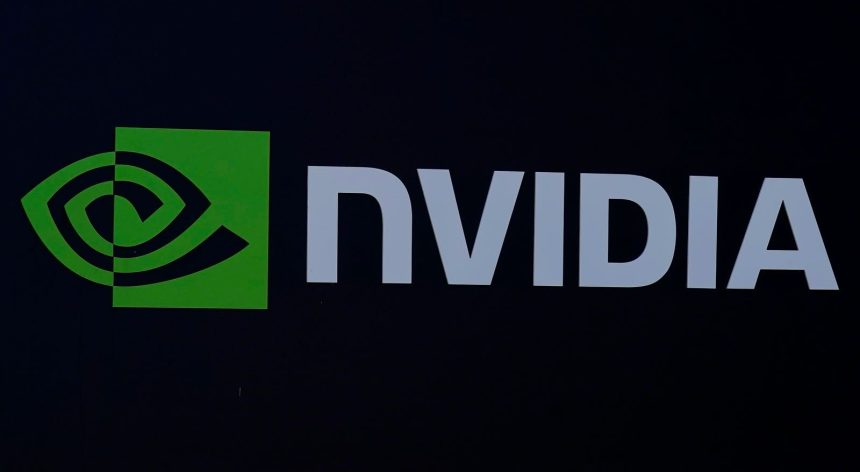Nvidia (NVDA) has been a market darling since the beginning of the decade. This is no secret to any level of investor. Regardless of the market environment, it just seems like NVDA bulls can’t lose. Artificial intelligence (AI) is still a hot topic, gaming as an industry and a hobby has never been more popular, and the market hunger for NVDA’s products looks stable, but can this continue? Will Nvidia stock reach $1,000? We’ll go through all the factors that could push the stock to this level, but through the near future, hitting this price target seems unlikely.
NVDA Stock Key Metrics
Like any growth name with a heavy bias toward being labeled a “tech” stock, NVDA’s basic valuation metrics are extremely elevated. As an example, at the time of writing, investors are looking at an eye-watering 101 P/E value. On its own and relative to many other blue-chip stocks, this is a staggeringly high value. But relative to its previous P/Es, this has been a progressive climb. Yes, it’s an elevated figure still, but so far the market has supported this valuation. Investors only need to be concerned with high P/Es like this when a company’s intrinsic valuation can’t be justified. Given Nvidia’s place in the semiconductor and gaming industry, there are many scenarios that analysts can create that reasonably support a continued high valuation. Otherwise, Nvidia’s stock metrics read like most other popular stocks driven by a healthy company. There’s good trading volume at around 44 million on average and volatility has lowered since the beginning of the year. The stock’s momentum is also strongly in favor of a continued move up. Overall, investors shouldn’t worry about the stock itself; there’s sufficient liquidity and enough broad market interest where there shouldn’t be any shocks when holding NVDA.
Key Takeaways
- Nvidia may be a “tech” name, but it also shares characteristics of a typical non-tech blue-chip stock (such as a regular dividend payment and mega-cap size).
- NVDA’s basic valuation metrics look elevated, but investors should keep in mind that this premium exists because of the company’s growth profile, so the intrinsic value should eventually catch up (if the bull case plays out).
- Entry and exit windows for a NVDA trade are abundant due to the company’s size and popularity.
From healthcare to retail, finance to education… AI is the catalyst for innovation across major industries. Ignite your portfolio—get the names of the top companies driving the AI revolution in this exclusive Forbes report, 12 Top AI Stocks to Buy Now.
Nvidia’s Recent Performance
Nvidia has beat on earnings since 2019 annually, quite a feat for any company but particularly one of its market cap; Nvidia is one of a handful of extant companies above the $1 trillion mark. As the widely considered leader in the AI chip space, most analysts that cover this name are expecting EPS growth moving forward. The cyclicality of the semiconductor industry can be somewhat difficult to predict, but judging by the last several quarters, Nvidia’s earnings seems to be expanding out of the trough. In the second quarter, the company generated an adjusted $2.70 per share against revenue of $13.51 billion. Both of these beat expectations, as did management’s guidance for the third quarter of $16 billion. The average 12-month price target is $645.53 among analysts covering Nvidia, which is around 48% return based on the share price at the time of writing.
Future Growth Challenges And Opportunities
Demand for AI chips is steady year-to-date, so investors shouldn’t expect much deviation through the rest of Nvidia’s fiscal year. At this point, the company is stable and mature; idiosyncratic risk is minimal relative to possible systematic risk. Overall though, there are two major arcs on the horizon for Nvidia and its leadership, one supporting the bear thesis and one related to the bull thesis:
Geopolitical Pressure
Recently, the U.S. Commerce Department decided to accelerate its embargo timeline on AI chips to China; Nvidia now has to comply immediately rather than in a month’s time. Management expects no major effect on this quarter’s financials because of this change. But, this event was material enough that it warranted an 8-K filing by the company, which should be no surprise to investors. This is less a caution of short-term revenue impact and more so a reflection of how U.S. foreign policy could be a long-term factor working against the company. Investors should also keep in mind that Taiwan, China’s neighbor to the south, is a critical production center for the semiconductor industry. Any escalation to the long-standing tension in the region would be a difficult storm to weather on both a political and economic level.
Entry Into The CPU Market
Nvidia is well-known for its GPUs or graphics processing units. Gamers, artists and scientists alike find value in this tech, as do large enterprise-level customers. The other major semiconductor-based component that all these users need alongside their GPUs are CPUs, or central processing units. Investors in this space understand that if Nvidia were to move into developing CPUs, their success might be so significant that it could generate regulatory action. As of this quarter, this is the exact route that the company is taking, with recent reports indicating that Nvidia is building their offering using ARM technology. The partnership makes sense, given that Nvidia was a cornerstone investor in ARM’s IPO in September. This processor won’t necessarily dominate its respective market (thanks to incumbent positioning by Intel and AMD) and its release isn’t expected until 2025, but investors should see this as a positive long-term catalyst.
From healthcare to retail, finance to education… AI is the catalyst for innovation across major industries. Ignite your portfolio—get the names of the top companies driving the AI revolution in this exclusive Forbes report, 12 Top AI Stocks to Buy Now.
Can Nvidia Reach $1,000?
So can Nvidia make it to $1,000 a share? Not any time soon, judging by current fundamentals. This year alone has given investors a nearly 200% return, which is rare even for a small-cap company, but especially unique given Nvidia’s size and influence. So for the share price to move past current levels to $1,000 would be a near 10x return from the beginning of 2023, although only about 2.3x from the price at the time of writing. Still, we’re talking about price movement that’s on the statistically unlikely side given the exponential curve needed for this to materialize. Recall that the stock’s momentum is favoring upside, so bullish investors shouldn’t stress over any volatility in the near future. But within this same period, bulls shouldn’t expect a jump to $1,000. Judging by the current trendline of Nvidia’s share price movement, that price target seems achievable in a few years assuming no major shocks to the global economy.
Bottom Line
Nvidia is both easy to invest in and perhaps difficult to understand. The average investor may not be able to discern the difference between an A800 and a H800 chip, but they can certainly tell that the market appetite for these products is voracious. It’s also easy enough to look at Nvidia’s recent SEC filings and see that growth is not only healthy, but even accelerating in some aspects. It’s already a trillion dollar company (market cap), so does that mean it can reach $1,000 a share? It certainly seems that way, although this milestone likely won’t be reached any time soon. Again, Nvidia’s fundamentals and technicals look good, so it’s not a bad pick for investors who want a big name tech addition to their portfolio. However, they shouldn’t expect the tremendous 200% return that current investors experienced over the last year. A price of $1,000 isn’t far off, but that’ll be further down the road rather than just around the corner. As always, make sure to perform your own due diligence and only invest what you’re willing to lose.
Read Next
From healthcare to retail, finance to education… AI is the catalyst for innovation across major industries. Ignite your portfolio—get the names of the top companies driving the AI revolution in this exclusive Forbes report, 12 Top AI Stocks to Buy Now.
Read the full article here




